Influencer marketing has taken social media by storm in the last five to 10 years. Since COVID-19, more talented people have joined the Creator Economy and revolutionized the way brands connect with audiences online.
These 101 influencer marketing statistics demonstrate that creators set the tone for brand sentiment on social media. The data also demonstrates that social media is a marketplace where digital word-of-mouth can “make or break” brands in the 21st Century.
How to use these stats to improve your influencer marketing campaign
As you go through this list of influencer marketing statistics, look for answers to some of the biggest questions in the industry:
- Why does influencer marketing work?
- What are reasons why some influencer programs are more successful than others?
- What do consumers think of social media creators?
- Where are consumers most likely to engage their favorite influencers?
- How many brands use influencer marketing?
- What types of creators/social channels/content perform best for audiences?
Once you have answers to these questions, you can also leverage these statistics to do the following:
- Set reasonable expectations for your current influencer program
- Plan influencer campaign budgets
- Get a better understanding of your audience
- Target the right audience, channel, and creators online
- Pitch new ideas to your boss or team
- Expand your reach to new channels
- Find new ways to repurpose influencer-generated content (i.e., paid ads) for greater ROI
16 Statistics proving influencer ROI
1. Influencer-generated posts consistently outperform branded posts, according to 60% of marketers.
(Source: Mediakix)
Consumers appreciate third-party, lifestyle content over polished images and videos from the brand’s own creative team.
2. Experts believe that influencer marketing will become a $15 billion industry by 2022.

Image via Oberlo
3. Marketers find that influencer-generated content receives an average 8x more engagement than branded content.
(Source: Mediakix)
User engagement is one of the best ways to track whether content resonates with a particular audience online.
4. Influencer whitelisting outperforms traditional social media ads by 20-50%.
(Source: Lumanu)
Influencer whitelisting occurs when a creator gives a brand they trust advertising permissions on their social media account. The brand uses that creator’s content to promote ads to new audiences from the creator’s profile. These ads feel more organic to consumers and as a result, perform better than traditional advertising.
5. 90% of influencer marketers find that creator campaigns produce as good or better returns than all other marketing mediums.
(Source: Mediakix)
6. Studies show that influencers produce as much as 11x more ROI than any other digital marketing approach.
(Source: Mediakix)
7. Influencer marketers see an average of $5-6.50 return on every $1 invested in social media creators.
(Source: Mediakix)
8. The average earned media value (EMV) on influencer-generated content for brands is between $12-18.
(Source: Mediakix)
EMV calculates the value of all third-party mentions. Social accounts with high EMV achieve significant ROI from a single post, whereas those with low EMV have little to no impact.
9. Influencer marketing increased from a $1.7 billion to a $13.8 billion dollar industry in the last five years.

Image via Statista
Even though influencer marketing was growing rapidly in 2019, lockdowns and safety protocols associated with a global pandemic further elevated the role of social media creators among consumers.
10. Experts predict that marketers will collectively spend more than $4.5 billion dollars on influencers by 2023.

Image via Statista
11. More than 60% of companies used influencer marketing in some capacity in 2020.
(Source: Statista)
12. Nearly 40% of B2B marketers plan to use influencer marketing more in the future.
(Source: Statista)
Influencer marketing has performed well for B2C ecommerce brands. Now, several B2B industries are cashing in and achieving great success.
13. More than 70% of companies planned to increase their influencer marketing budget in 2021.

Image via Statista
14. Expanding reach and acquiring new customers are the top reasons why brands used influencer marketing in 2021.
(Source: Statista)
The social proof associated with an authentic brand endorsement by an influencer can shorten the buyer’s journey, lower customer acquisition costs (CAC), and increase customer lifetime value (CLV).
15. The percentage of marketers using influencer marketing in the U.S. is predicted to increase by 17% between 2019 and 2022.

Image via eMarketer
Creator management is increasingly going hand-in-hand with social media marketing.
16. In January 2021, more than 60% of marketers stated they planned to increase creator spending.
(Source: eMarketer)
An additional 20% of marketers said that they would keep their 2020 influencer marketing budget intact for the new year. Only 19% of brands either planned to decrease their budget or were undecided.
21 Statistics on why consumers trust social media influencers
1. 80% of consumers complete a purchase after seeing an influencer recommend that product on social media.
(Source: Oberlo)
Though followers may not know their favorite creators personally, they see those creators as honest and trustworthy. Influencer marketing is an effective way to spread digital word-of-mouth.
2. More than half of consumers state that word-of-mouth and social media are their preferred ways to discover new brands.
(Source: GRIN Report: Power of Influencer Marketing in Numbers)
3. Regardless of the creator’s follower count, almost 70% of consumers are bothered when that creator lacks transparency about a sponsored post.

Image via GRIN Report: Power of Influencer Marketing in Numbers
It’s not that consumers hate being marketed to, it’s that they want brands and influencers to be up front about what they post and why. Adding the appropriate hashtags (#sponsored) and disclaimers helps you and your creator partners be transparent with your audience.
4. As many as half of social media users don’t equate followers size with influencer trustworthiness.
(Source: GRIN Report: Power of Influencer Marketing in Numbers)
When it comes to follower counts, bigger isn’t always better. By taking a closer look at how that influencer connects with their followers, you can get a better sense of how they can help you reach your goals.
5. 46% of consumers prefer to follow creators that look and act like “everyday people.”

Image via GRIN Report: Power of Influencer Marketing in Numbers
6. More than half of social media users report that an influencer’s follower count does not impact their decision to take action on product endorsements.
(Source: GRIN Report: Power of Influencer Marketing in Numbers)
7. 60% of consumers say that they are more likely to trust influencer endorsements when that influencer regularly engages follower comments.
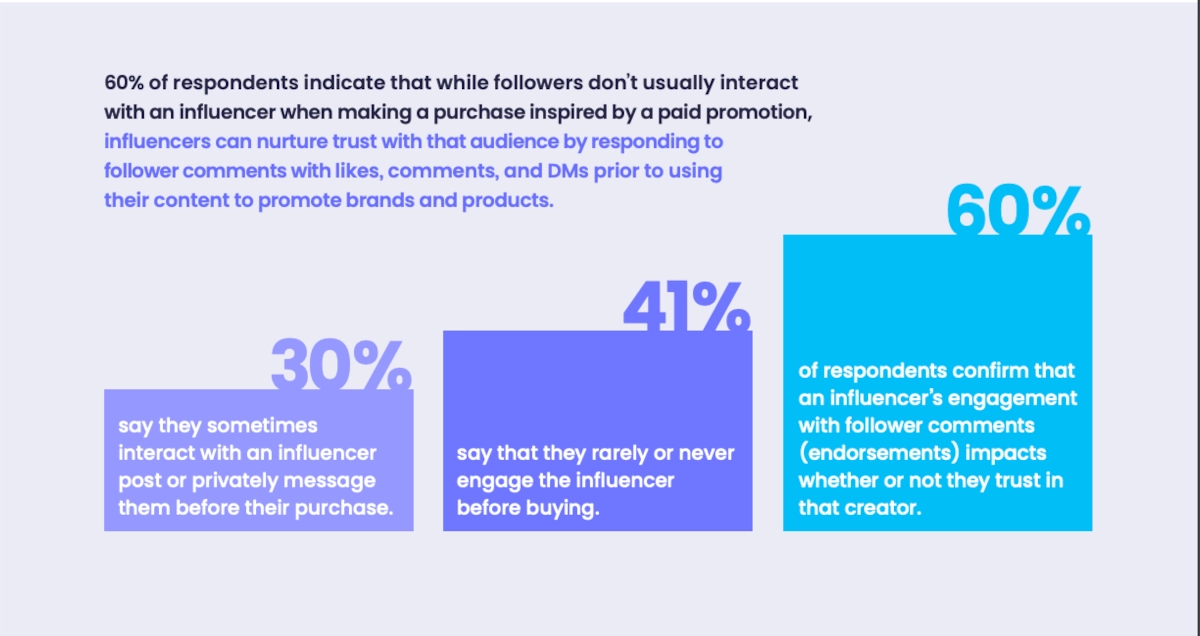
Image via GRIN Report: Power of Influencer Marketing in Numbers
When creators interact regularly with their followers, it nurtures a genuine connection that results in greater engagement and conversions.
8. Gen Z-ers and Millennials are the top U.S. consumers most interested in influencer-recommended products and services.

Image via eMarketer
The next generation of buyers overwhelmingly favor products and brands endorsed by creators that they trust.
9. Men trust influencer endorsements slightly more than women.
(Source: GRIN Report: Power of Influencer Marketing in Numbers)
When it comes to influencer trust, 26% of men seem to be more trusting of influencers for purchasing decisions, compared to 13% of women.
10. Men who trust creator endorsements tend to spend more per purchase than women.
(Source: GRIN Report: Power of Influencer Marketing in Numbers)
Studies show that men are likely to spend $500 more than women when an influencer promotes a product.
11. 70% of consumers say they follow more than 10 influencers.
(Source: GRIN Report: Power of Influencer Marketing in Numbers)
12. Almost 25% of consumers will unfollow a creator if they feel that they can’t trust them to be honest and authentic.
(Source: GRIN Report: Power of Influencer Marketing in Numbers)
Authenticity remains the single greatest factor when it comes to influencer marketing success.
13. The number one reason why followers don’t trust an influencer occurs when that influencer promotes products that they don’t genuinely care about.
(Source: GRIN Report: Power of Influencer Marketing in Numbers)
14. More than 40% of social media users say they prefer influencer reviews when considering whether to make a purchase.

Image via GRIN Report: Power of Influencer Marketing in Numbers
15. Over 80% of consumers are more inclined to buy products that creators promote.
(Source: GRIN Report: Power of Influencer Marketing in Numbers)
Online buying can be tricky for those who prefer to see or handle products in real life before making a purchase. But when a creator that they trust uses and praises a product, consumers are more likely to take a chance on that brand.
16. More than 90% of consumers engage influencers on a weekly basis on Instagram, YouTube, TikTok, and Snapchat.\

Image via Statista
17. More than 60% of American travelers consulted their favorite influencers for their next destination.
(Source: Statista)
These consumers reported that they “often” or “sometimes” sought recommendations from travel influencers, while an additional 22% stated that they also do so on rare occasions. Of all those surveyed, only 15% said that they didn’t consult influencers at all before planning trips.
18. 70% of social media live stream viewers in the U.S. said they were “likely to buy products from influencers.”
(Source: eMarketer)
Brands are increasingly interested in live streaming features on Instagram, Facebook, YouTube, TikTok, and Twitch.
19. 40% of Twitch users in the U.S. credit their purchase to a creator’s recommendation.
(Source: Statista)
20. 34% of TikTok users in the U.S. credit their purchase to a creator’s recommendation.
(Source: Statista)
21. 25% of Instagram users in the U.S. credit their purchase to a creator’s recommendation.
(Source: Statista)
8 Statistics on creator management
1. In-house influencer marketing programs consistently outperform those that use agencies and marketplaces.
(Source: Forbes)
Strong brand-influencer relationships keep campaigns authentic and creator excitement high. The “middle man” approach to influencer marketing often results in transactional relationships that alienate buyers.
2. More than 15% of brands spend over half their marketing budget on creator partnerships.
(Source: BigCommerce)
3. Influencer marketers consider their leading challenges to be measuring campaign performance and influencer ROI.
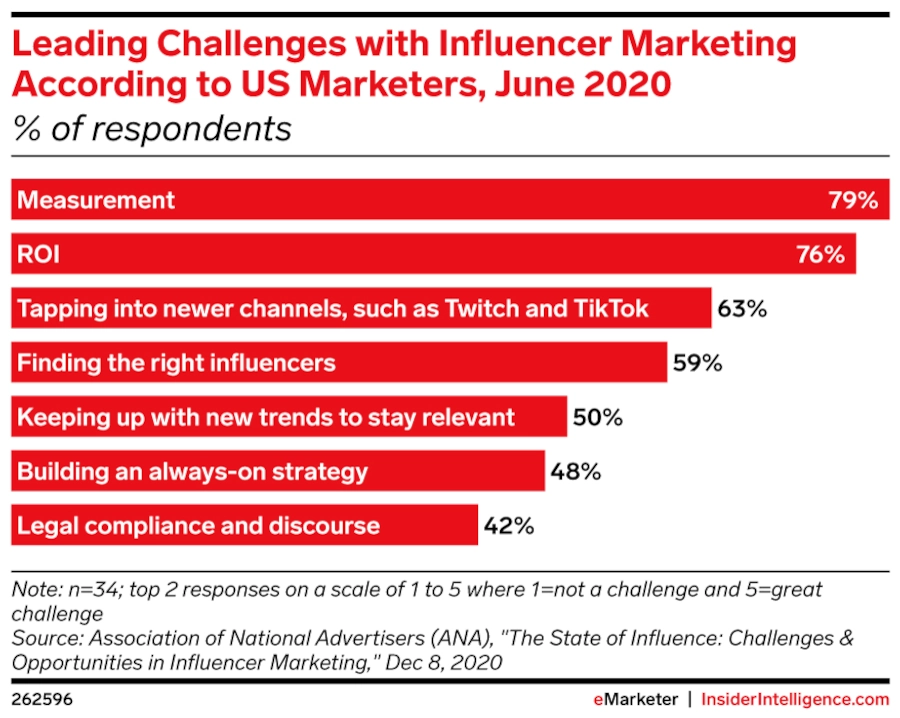
Image via eMarketer
Many marketers are still trying to track their creator campaigns across several different tools and spreadsheets. Creator management is shifting toward leveraging intuitive automation tools that can accurately attribute influencer performance.
4. More than ¾ of influencer marketers use social post engagement as their main approach to tracking campaign performance.
(Source: eMarketer)
Brands that are investing more resources into creator management are learning how to measure campaign performance across all stages of the marketing funnel. This approach allows them to gather more metrics to better calculate influencer ROI.
5. Nearly 60% of influencer marketers say they have difficulty identifying the right creator for their brand.
(Source: eMarketer)
Recruiting the right creators makes all the difference in your campaign performance. Scaling your program often means incorporating better outreach and relationship management tools for your brand.
6. 30% of influencer marketers work with celebrities.
(Source: Mediakix)
7. Over 80% of influencer marketers consider a creator’s content quality to be the biggest consideration when negotiating rates.
(Source: BigCommerce)
8. More than 90% of influencer marketers prefer Instagram over all other platforms.

Image via Statista
12 Statistics on preferred social platforms and content types in influencer marketing
1. Instagram is still the leading platform for influencer marketing and creator partnerships.
(Source: BigCommerce)
2. TikTok is the fastest-growing channel in the history of social media.
(Source: CNBC)
Owned by China’s ByteDance, TikTok officially launched in 2016 and is now a global sensation.
3. Facebook is still the most widely used social media platform in the U.S.
(Source: Statista)
4. Highly-visual platforms (images, memes, videos, infographics, etc.) consistently outperform those that are less visual.

Image via GRIN Report: Power of Influencer Marketing in Numbers
5. Sponsored video posts are the most expensive type of influencer-generated content.

Image via eMarketer
The average micro influencer video costs $261, compared to $170 per sponsored post. This cost gap increases among macro and celebrity influencers. That said, most influencer marketers consider creator videos their most profitable campaigns on social media.
6. The percentage of marketers who use TikTok for creator partnerships jumped by more than 50% between 2020 and 2021.
(Source: eMarketer)
7. With the exception of Twitter and Facebook, brand-influencer partnerships have increased in every leading social media channel between 2020 and 2021.

Image via eMarketer
8. Informative creator posts, such as product reviews and how-to videos, are the most popular types of content on social media.
(Source: Mediakix)
9. Between February 2020 and January 2021, Twitch streaming increased by more than 160%.

Image via Statista
In the last few years, Twitch has become home to thousands of talented live streamers across several industries, including gaming, music, food, and more.
10. TikTok traffic doubled between 2019 and 2021.

Image via Statista
TikTok officially reached 1 billion monthly active users (MAUs) in September 2021, a milestone only a few social platforms have achieved.
11. Experts predict that the number of Instagram users will reach 1.2 billion by 2023.
(Source: Statista)
12. There are currently almost 3 billion monthly active users on Facebook.
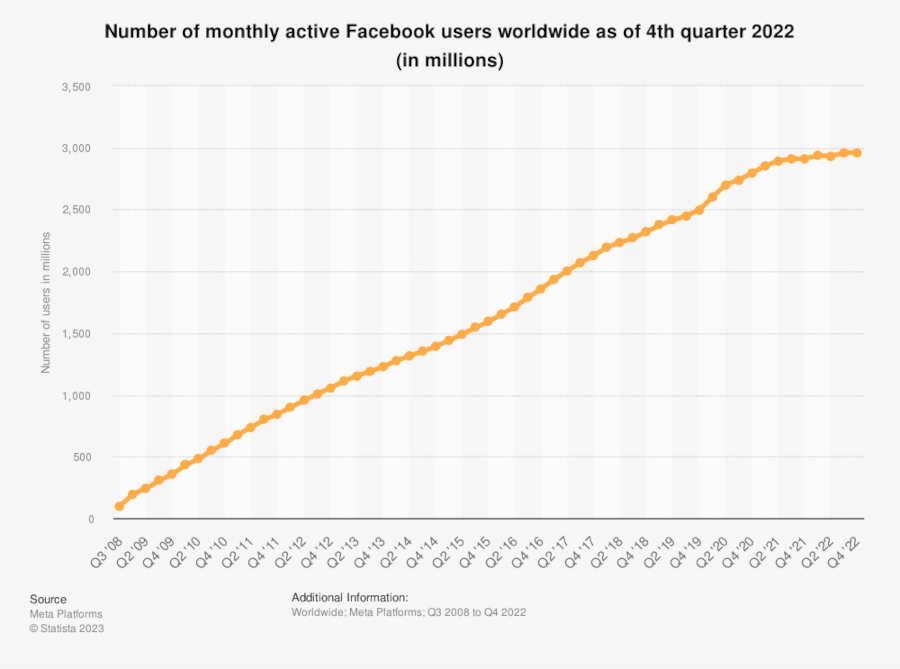
Image via Statista
19 Statistics about social media creators
1. Experts believe that there are about 50 million social media creators around the globe.
(Source: eMarketer)
These users are self-professed creators who leverage one or more social channels to produce original content for audiences on a regular basis.
2. There are between 2 and 40 million influencers on Instagram.

Image via Mediakix
3. 87% of Instagram creators have between 1,000 and 50,000 followers.

Image via Mediakix
Conversely, less than 13% of Instagram creators achieve more than 50,000 followers.
4. There are between 1.5 and 5 million influencers on YouTube.

Image via Mediakix
5. 97% of YouTube creators have between 1,000 and 100,000 followers.

Image via Mediakix
It is extremely difficult to become a macro influencer on YouTube. Currently less than 3% of all YouTube creators have more than 100,000 subscribers.
6. There are between 10,000 and 95,000 influencers on TikTok.

Image via Mediakix
7. 40% of TikTok creators have more than 500,000 followers.

Image via Mediakix
TikTok is the social channel with the highest percentage of mega influencers.
8. In 2020, black creators were among the highest paid influencers in the U.S. on average.

Image via Statista
Thanks to more calls for inclusivity among creators, influencer marketing is one the first marketing tactics to specifically target minority groups and marginalized communities.
9. 75% of creators are only interested in working with brands that align with their values.
(Source: Statista)
Creators understand their audiences better than most brands. That’s why partnering with the right influencer is the most critical part of any campaign.
10. Nearly 80% of creators generate additional income on top of brand partnerships.
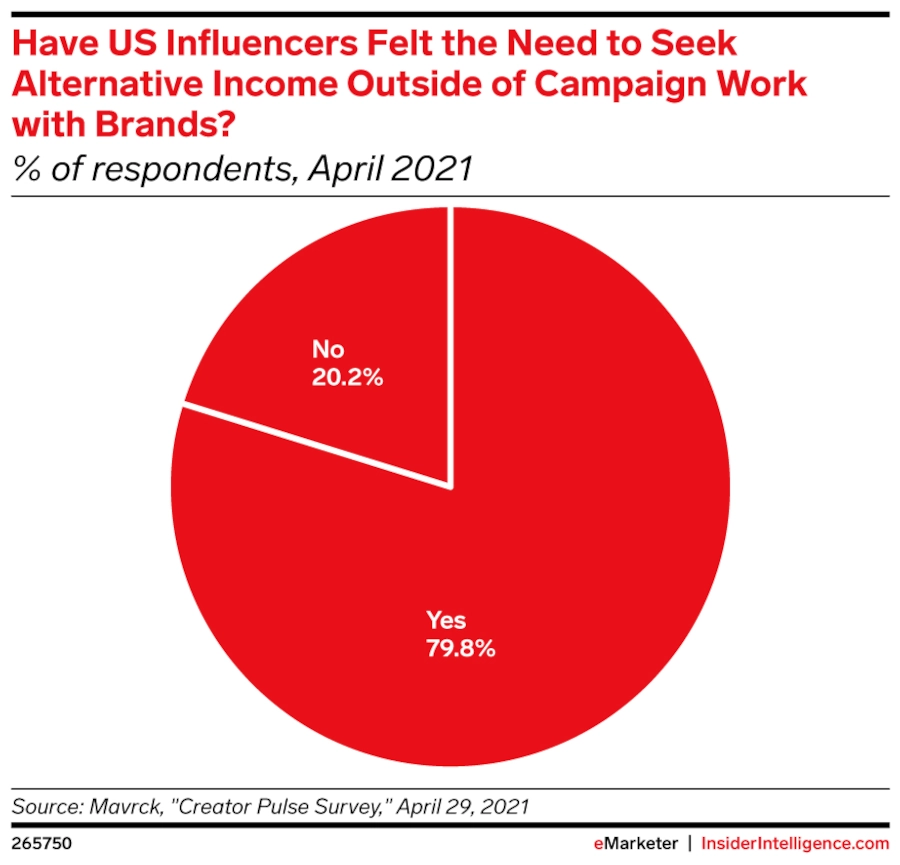
Image via eMarketer
Some influencers maintain day jobs or leverage other creator income opportunities like Patreon or tipping.
11. Brand collaborations remain the leading source of influencer income.
(Source: eMarketer)
Nearly 70% of all reported influencer income comes from brand-creator partnerships in 2021. Affiliate partnerships account for another 10% of creator income.
12. Half of the top 10 wealthiest YouTube creators are gamer influencers.
(Source: Mediakix)
13. Cristiano Ronaldo is the highest-paid influencer on Instagram.
(Source: The Guardian)
14. Cristiano Ronaldo is the Instagram influencer with the largest engaged audience with over 366 million followers.
(Source: GRIN’s Creator Discovery Suite)
15. Cristiano Ronaldo is the Instagram influencer with the highest number of authentic engagements.
(Source: GRIN’s Creator Discovery Suite)
Cristiano rakes in an astounding 9 million engagements with an average engagement rate of 2.4%.
16. Charli D’amelio is the TikTok influencer with the largest engaged audience with over 129 million followers.
(Source: GRIN’s Creator Discovery Suite)
17. Khaby Lame is currently the fastest-growing creator on both Instagram and TikTok.
(Source: GRIN’s Creator Discovery Suite)
Between the two platforms, Khaby has over 175 million engaged followers.
18. Felix Kjellberg, also known as PewDiePie, has the most subscribers on YouTube with over 110 million active fans.
(Source: GRIN’s Creator Discovery Suite)
19. The top three industries for YouTube creators are tech, gaming, and food/beverage.
(Source: Statista)
These three industries account for an influencer media value (IMV) of $360 million (tech), $190 million (gaming), and $130 million (food/beverage).
11 Consumer behavior statistics in influencer marketing
1. Gen Z-ers and Millennials spend an average of 2.5 hours on social media every day.
(Source: Mediakix)
2. 75% of surveyed adolescents said they wanted to be YouTubers when they grow up.
(Source: Mediakix)
For the first time in history, being a full-time social media creator is a viable career option for the current and next generation of teens and adults.
3. 70% of TikTok users in the U.S. are under the age of 40.
(Source: Statista)
TikTok currently serves the youngest consumer audience online today and is the most popular social channel for those under 25.
4. 67% of Twitch users in the U.S. are men.
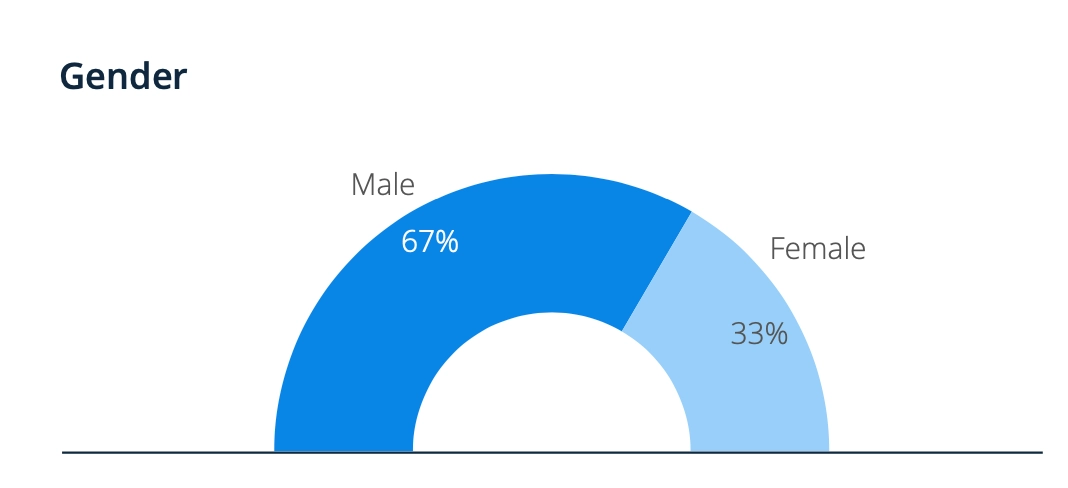
Image via Statista
5. The most popular Twitch demographic in the U.S. are consumers between the ages of 25-34 years old.

Image via Statista
6. 40% of Twitch users in the U.S. are considered high-income consumers.
(Source: Statista)
7. The top three hobbies for Twitch consumers are video games, music, and tech.

Image via Statista
8. 54% of U.S. TikTok users are women.

Image via Statista
9. The top three hobbies for TikTok consumers are music, food, and video games.
(Source: Statista)

10. 52% of U.S. Instagram users are female.

Image via Statista
11. 54% of U.S. Facebook users are female.

Image via Statista
14 Social commerce statistics for influencer marketers
1. 95% of consumers surveyed said that they purchased products through Facebook and Instagram.
(Source: GRIN Report: Power of Influencer Marketing in Numbers)
Facebook Marketplace (servicing both Facebook and Instagram) is the most sophisticated social commerce platform today.
2. The average order value of purchases made through social media is $81.
(Source: Statista)
3. Between 2019 and 2021, the number of social commerce buyers in the U.S. increased by 40%.
(Source: eMarketer)
In 2021, there are approximately 90 million social buyers compared to 64 million in 2019.
4. Experts predict that there will be more than 100 million U.S. social commerce buyers by 2023.

Image via eMarketer
5. Between 2019 and 2021, the amount of social commerce sales in the U.S. increased by 86%.
(Source: eMarketer)
Experts anticipate more than $36 billion in social sales by the end of 2021, compared to just under $20 billion in 2019.
6. Experts predict that there will be more than $52.5 billion in U.S. social commerce sales by 2023.

Image via eMarketer
7. Social commerce sales in the U.S. are expected to reach $80 billion by 2025.
(Source: Statista)
8. Fashion is the top industry for social commerce.

Image via eMarketer
9. 86% of influencer marketers are actively using shoppability features within social media platforms.
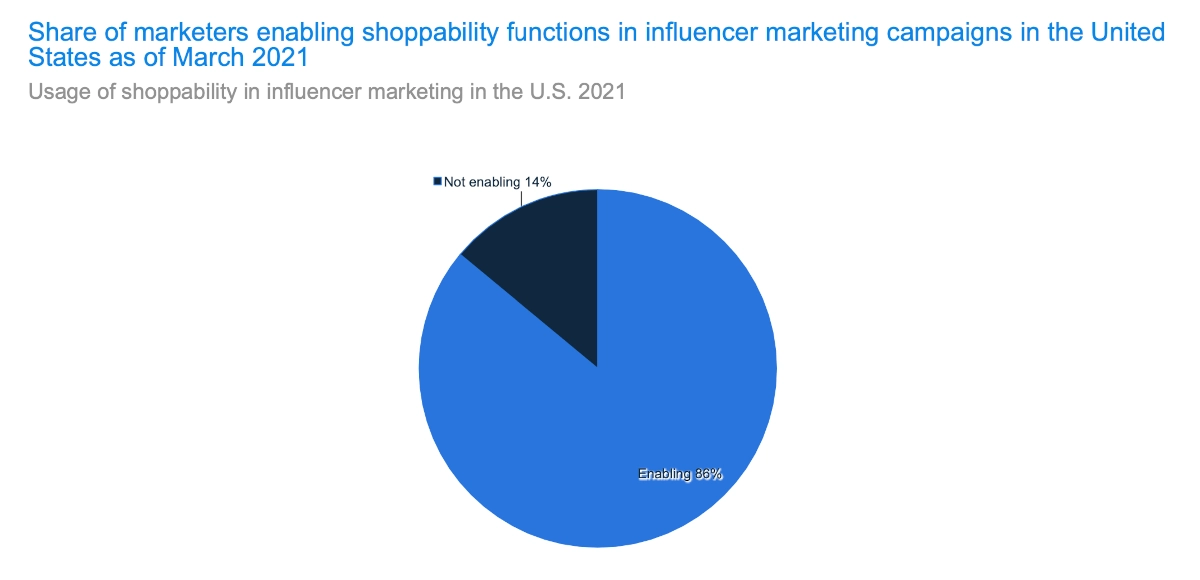
These features include in-app shopping, shoppable image ads, digital price tags, AR filters, and more.
10. Between 2020 and 2021, social commerce sales increased by $10 billion.
(Source: Statista)
11. Over 90% of brands now use social media to market their products and services.
(Source: Statista)
12. In January 2021, more than half of marketers planned to increase spending on Instagram, YouTube, and LinkedIn.
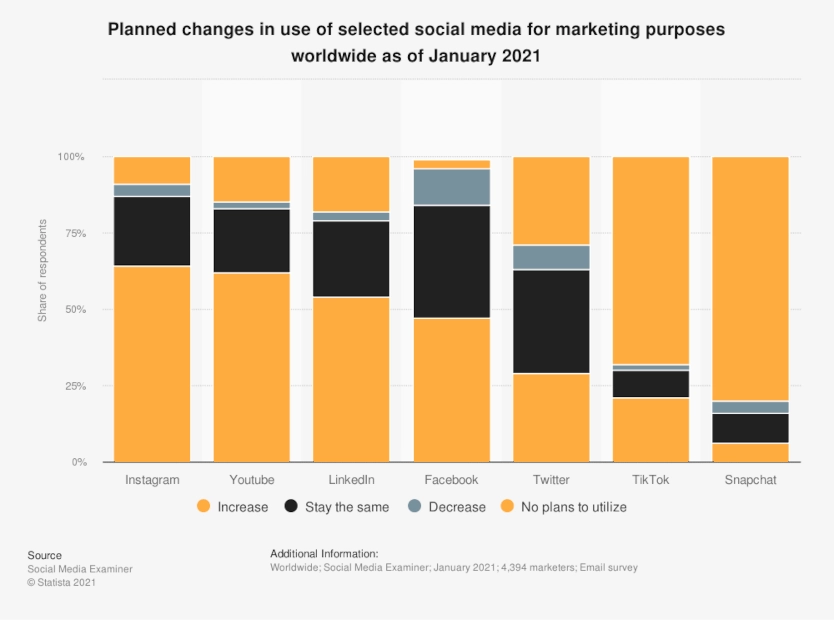
Image via Statista
13. Despite TikTok being the fastest-growing social channel in history, 80% of marketers had no plans to utilize the channel in 2021.
(Source: Statista)
This data reveals that many brands are unsure about how to utilize this new channel. Brands that leverage this platform early have a clear advantage over their competitors, particularly when reaching younger audiences.
14. Facebook has the highest conversion rate for brands leveraging social commerce tools.

Image via eMarketer
High conversion rates for Facebook and Instagram result primarily from Facebook Marketplace’s advanced social commerce features.
Conclusion
The evidence for influencer marketing as a leading digital marketing strategy is overwhelming. As traditional marketing tactics lose effectiveness, it is more important than ever that brands find better ways to connect with their customers. These influencer marketing statistics demonstrate that creator partnerships pave the way for better brand-consumer relationships.
Learn more about influencer marketing: Influencer Marketing 101

















